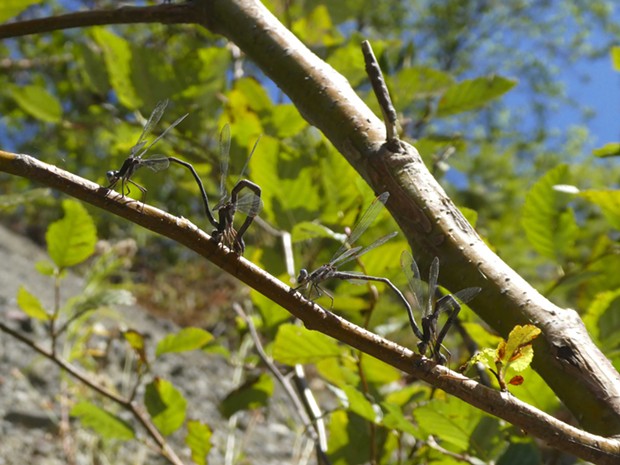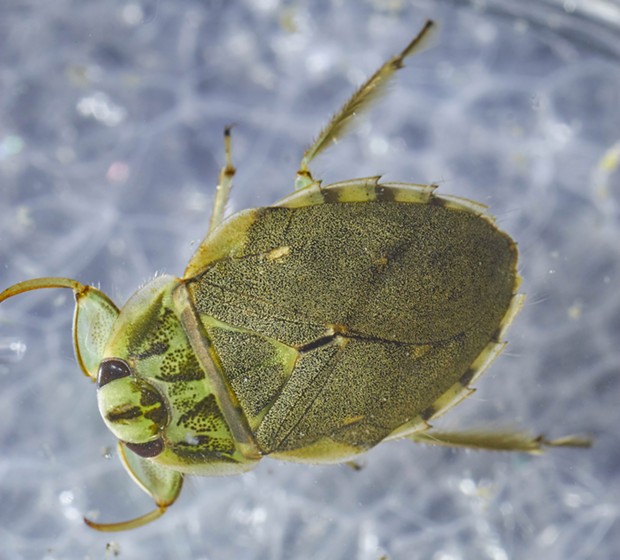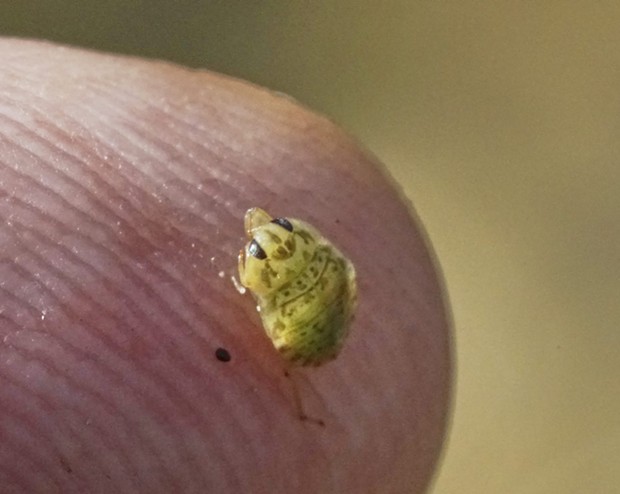[
{
"name": "Top Stories Video Pair",
"insertPoint": "7",
"component": "17087298",
"parentWrapperClass": "fdn-ads-inline-content-block",
"requiredCountToDisplay": "1"
}
]
[image-4]
As the fall days contract and weather cools, the insect world, too, shrinks. I see a few largish dragonflies, mostly shadow darners (Aeshna umbrosa) and they're showing wear. I suspect they are what I call a “relict population.” Unlike aging humans, they can contribute nothing further to the survival of their species so they just keep living until, for one reason or another, they don't.
On the other hand, the California spreadwing (Archilestes californica) damselflies are busily ovipositing (egg laying). The female gouges out a place for her eggs in a twig overhanging water. The males clasp the females behind the head, preventing any other male from mating with her, thus assuring his genetic line is the one being preserved. When the eggs hatch they will drop into the water directly below.
In that water below, I noticed dozens of greenish gray critters about the size of a pumpkin seed quickly scurrying from the shelter of one pebble to another. I caught one in a plastic spice jar just to see what it was. They were “creeping water bugs,” predators of the order Hemiptera, sub-order Heteroptera or true bugs. They are characterized by having piercing sucking mouth parts and leathery half forewings. The members of this family, (Naucoridae) have a particularly painful bite. Last year in August, while wading in the river, an immature one smaller than a paper match head got caught under the strap of my sandal and bit me. It felt like I'd been stuck hard with a pin immediately and the itching was really bad for a day or two. The mark it left lasted for a couple of weeks.
The painful bite is merely a beneficial (from the insect's perspective) side effect of its feeding process. Using its sharp beak, it injects a cocktail of powerful digestive juices which immediately liquify its prey's innards, allowing the insect to dine on its favorite food: bug juice slurpy. Anything that can quickly digest protein is going to hurt since that's what comprises most of our tissues. I know it motivated me to get that little fellow out of my sandal pretty quickly.
As the fall days contract and weather cools, the insect world, too, shrinks. I see a few largish dragonflies, mostly shadow darners (Aeshna umbrosa) and they're showing wear. I suspect they are what I call a “relict population.” Unlike aging humans, they can contribute nothing further to the survival of their species so they just keep living until, for one reason or another, they don't.
On the other hand, the California spreadwing (Archilestes californica) damselflies are busily ovipositing (egg laying). The female gouges out a place for her eggs in a twig overhanging water. The males clasp the females behind the head, preventing any other male from mating with her, thus assuring his genetic line is the one being preserved. When the eggs hatch they will drop into the water directly below.
In that water below, I noticed dozens of greenish gray critters about the size of a pumpkin seed quickly scurrying from the shelter of one pebble to another. I caught one in a plastic spice jar just to see what it was. They were “creeping water bugs,” predators of the order Hemiptera, sub-order Heteroptera or true bugs. They are characterized by having piercing sucking mouth parts and leathery half forewings. The members of this family, (Naucoridae) have a particularly painful bite. Last year in August, while wading in the river, an immature one smaller than a paper match head got caught under the strap of my sandal and bit me. It felt like I'd been stuck hard with a pin immediately and the itching was really bad for a day or two. The mark it left lasted for a couple of weeks.
The painful bite is merely a beneficial (from the insect's perspective) side effect of its feeding process. Using its sharp beak, it injects a cocktail of powerful digestive juices which immediately liquify its prey's innards, allowing the insect to dine on its favorite food: bug juice slurpy. Anything that can quickly digest protein is going to hurt since that's what comprises most of our tissues. I know it motivated me to get that little fellow out of my sandal pretty quickly.
Speaking of...
-
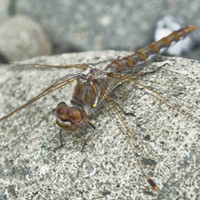
HumBug: Winter Insects
Feb 16, 2020 -
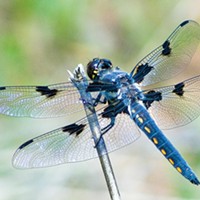
Best of the Bugs
Jan 2, 2020 -
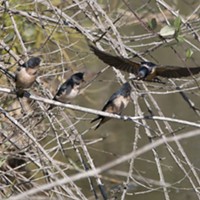
HumBug: Things that Need Bugs
Dec 29, 2019 - More »
more from the author
-
HumBug: Early Spring Pollinators
- Apr 12, 2020
-
HumBug: A Recipe for History
- Apr 5, 2020
-
HumBug: Bugs in the City
- Mar 29, 2020
- More »
